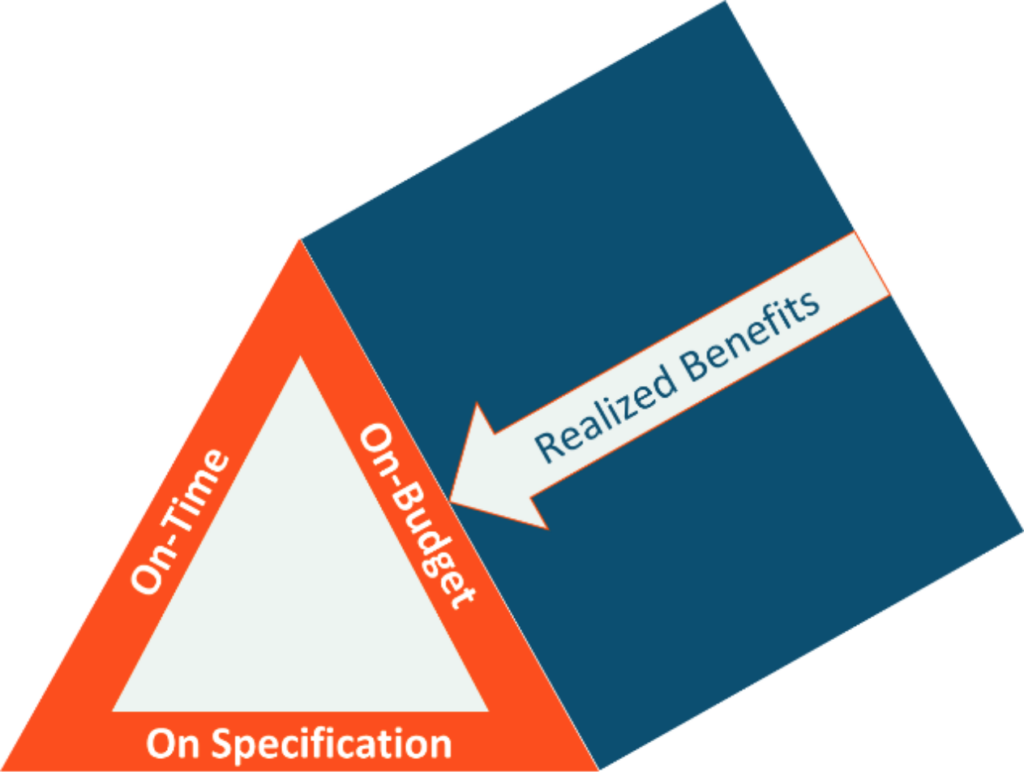Project management is a complex discipline, and the success or failure of a project can hinge on various factors. Here, we will delve into the top five reasons projects fail and the potential impact of Artificial Intelligence (AI) on each of these five project management factors.
#5 Weak Project Charters
A project’s foundation lies in its Project Charter, which outlines the “How” of the project after the business case establishes the “Why.” Weak project charters often result from a lack of specificity in problem definition. When problems are unclear, solutions become ambiguous, leading to project failure.
In the IT world, the rise of the Agile approach has sometimes encouraged weak charters, with organizations neglecting project requirements. Without a clear understanding of what a solution needs to include, the chances of meeting those requirements is greatly reduced.
AI’s Impact – AI-powered project charter analysis tools can enhance the clarity and specificity of problem statements. These tools leverage natural language processing and data from similar projects to recommend precise problem definitions and project scopes. By ensuring clear charters, AI helps organizations avoid ambiguity and project failure, and all with lower effort from expensive project resources.
#4 Procrastinating on Delivering Bad News
Bad news is like milk, not like cheese. It doesn’t age well. Ignoring problems or costs early in a process leads to exponential increases. For instance, every dollar spent on correcting issues during a project’s Definition Phase can save double, quadruple, or even tenfold the cost that would have been incurred if left unaddressed.
Effective communication of bad news is essential in project management. Organizations with mature project management practices are more likely to report issues early, allowing for proactive problem-solving.
This is because addressing potential problems early offers more options. In the Definition Phase, actions like adjusting budgets, timelines, and scope and implementing risk monitoring procedures are feasible. During initiation, effective planning can mitigate the risks of poor planning. Even if problems arise during execution, adjustments can still be made: revising baselines, adapting plans, setting new goals, etc.
When issues are allowed to materialize, there are often no reasonable solutions. The project team deals with the time, effort, and money costs to resolve these problems. In such cases, a project may miss its targets, compromise quality, or even face cancellation.
So, why do we sometimes fail to act proactively?
Despite knowing the importance of staying ahead of problems, many of us resist it. Part of this reluctance is linked to the role of project managers in the organizational structure. Middle managers find themselves in a unique position—they’re responsible for tasks performed by subordinates but are accountable to higher-ups when significant interventions are needed. Project managers often oversee individuals who aren’t directly responsible to them.
Specific organizational dynamics can worsen this situation. When things go awry, simply informing stakeholders might not suffice. Some organizations have a culture of blaming the messenger, and some stakeholders may acknowledge the bad news but resist recommendations, wanting issues resolved without sacrificing time, money, or scope.
These external factors tap into a universal human instinct. Ideally, everyone in an organization would prefer praise over dwelling on problems. Yet, influential leaders must confront this instinct regularly.
Many project managers hesitate to communicate bad news due to concerns about stakeholder reactions and organizational culture. Organizations should promote transparency and encourage project managers to report issues promptly to counter this tendency.
AI’s Impact – AI-powered project risk management tools can predict and identify potential issues early. AI can generate risk alerts and recommend mitigation strategies by analyzing project data, stakeholder feedback, and external factors. These tools give project managers the confidence to proactively communicate issues, knowing they have data-backed insights to support their decisions.
#3 Unrealized Benefits
Project success is often evaluated based on the triple constraint model: on time, budget, and specification. However, this two-dimensional perspective overlooks a critical dimension: realizing intended benefits.
Even though there are three components, it is just a 2- dimensional view. While a triangle has three sides, it is still a 2-dimensional shape. In this case, the triangle’s base (Specification) represents lifecycle management. On-time and on budget are two arms of project management that make up the triangle’s height.
We’ll use an example to show how incomplete this view of project success is. One of our clients, an animal pharmaceutical company, had developed a new product for inseminating cows. It was a compelling product that allowed farmers to get higher insemination rates from their bulls. The marketing department estimated that if just one in every tenth farm bought the product, they could make over $20 million. The company invested millions in developing the product, assuming they could make an almost 10:1 return on investment. When they released the product, no one bought it. It was shelved with zero return, so the company lost all its investment.
The example fails to mention whether the product was delivered on time, budget, and specification. Do those questions matter? Even without that information, we can conclude the project was a failure. This illustrates the third dimension of project success. If a project doesn’t realize the intended benefits, it has failed. This makes up the depth of the triangular prism in the following figure:

Not only is this the most overlooked dimension of project success, but it’s also the most important. If the cow insemination product had made $20 million as projected, it could have gone 50% over budget and an entire quarter past schedule, and it still would have had a massive return on investment. The project would have been a success even if it missed the mark in almost every way; we evaluate projects from a traditional project management perspective.
It is essential to maintain a critical perspective toward failure when managing projects. An organization may have a track record of delivering successful projects but still experience minor issues on individual projects. In a culture that prioritizes project perfection, even when things become chaotic and disorganized in the real world, the project may not necessarily fail.
Projects should be evaluated based on their ability to deliver the intended benefits. A project that exceeds its budget or timeline but generates significant returns can still be a success. Organizations must prioritize benefit realization as a key project success metric to avoid costly failures.
AI’s Impact – AI-driven benefit realization platforms track and measure the achievement of project objectives and benefits in real time. These platforms use data analytics and AI algorithms to assess whether projects are on track to deliver the intended benefits. By providing early warnings and actionable insights, AI can help organizations take corrective actions to ensure benefits are realized.
#2 Organizational Rigidity
Rift Valley in East Africa experienced frequent climate and landscape shifts 25 million years ago, alternating between woodland and grassland environments for millions of years. These fluctuations presented challenges such as inconsistent food sources and water availability. Adaptability, rather than a specific trait, was crucial. Whether one consumed grass or fruit didn’t matter; fruit eaters starved during grassland periods, and grass eaters suffered during woodland phases.
Our human ancestors’ unique cognitive abilities allowed them to adapt to these changing conditions. Their adaptive gut, tool usage, and shelter-building skills enabled them to thrive in any environment, explaining our species’ success compared to others.
In today’s competitive business world, survival isn’t solely determined by luck. It follows a “Survival of the Fittest” principle, where organizations attuned to shifting economic climates, business cultures, and consumer trends prevail.
While fitness in a specific environment is vital, adaptability is the key. Consider a business culture favoring well-established industry giants. They dominate while organizations with slim margins on low-risk projects fade away. However, emulating these aggressive giants isn’t always wise. They may excel in the current climate, but a shift towards risk aversion could endanger them.
Enduring organizations consciously adapt their approach. In an aggressive environment, they maximize returns with high-risk strategies. With a flexible process for adapting to any circumstance, they thrive despite evolving economies, technologies, and cultures.
Adaptability is essential in today’s fast-paced business environment. Organizations that cannot adjust their strategies and portfolio approaches to changing economic climates, business cultures, and consumer trends risk becoming extinct. The importance of adaptability is underscored by more recent examples such as the pandemic and the Great Recession of 2008.
AI’s Impact – AI-driven market analysis and trend prediction tools empower organizations to adapt proactively. AI can identify emerging trends, competitive threats, and consumer preferences by analyzing vast datasets from diverse sources. These insights enable organizations to make informed strategic decisions and adjust their project portfolios accordingly.
#1 Elusive Resource Management
The foremost cause of project failure has perennially plagued project and portfolio management – the elusive resource management concept.
Resource management is the cornerstone of project success, yet it remains a significant challenge for organizations. This shortcoming often results from inadequate resource allocation planning, leading to projects starting without the necessary resources, contributing to early derailment and eventual failure.
Organizational operations pivot around the execution of initiatives aimed at realizing the corporate vision. Selecting and executing suitable projects effectively is imperative to reach your desired destination. Pursuing the correct projects falls under the purview of Project Portfolio Management (PPM), while delivering flawless project execution is the essence of Project Management. These two pillars constitute the bedrock for fulfilling the organizational mission.
An ideal plan encompasses comprehensive consideration of all known factors. Consequently, a schedule lacks credibility if it doesn’t meticulously balance resource demand with capacity. In essence, resource management serves as the linchpin that harmonizes project management and PPM.
Imagine encountering a situation where the essential resources were unavailable at the project’s inception. On Day 1, the project is already veering off course! This issue underscores the significance of resource management.
Many organizations struggle with managing their resources effectively. Comparing demand with capacity seems simple, but it often becomes a logistical challenge in practice. Although engineering circles have employed methodologies for estimating capacity for years, the issue lies in the lack of rigor and recognition of the Return on Investment (ROI) associated with tracking this essential information. Generating capacity estimates requires considerable resources, and demand must be continually adjusted based on capacity, which requires further resources for upkeep.
The outcome is an ongoing cycle that has bedeviled organizations, especially those with unrealistic expectations from insufficient investments. We’ve previously contended that Artificial Intelligence (AI) could hold the key to unraveling this conundrum that impedes project success.
AI’s Impact – AI-powered resource management tools are revolutionizing project management. These tools use predictive analytics and machine learning algorithms to optimize resource allocation. AI can recommend resource adjustments by analyzing historical data and real-time project progress, helping organizations avoid resource shortages and delays.
Project management is a multifaceted discipline, and understanding the common reasons behind project failures is critical for organizations seeking to improve their success rates. By addressing weak project charters, fostering open communication, prioritizing benefit realization, promoting adaptability, enhancing resource management, and leveraging AI-powered tools, organizations can take proactive steps to mitigate the risks associated with project failures and achieve higher project success rates. The data and research cited in this article provide actionable insights for improving project management practices in the era of AI.
Discover how WiserWulff can help your organization strengthen its portfolio, program, and project management approach to achieve consistent results from your initiatives. Please visit us at www.wiserwulff.com or contact us at info@wiserwulff.com.

How AI Can Address 5 Common Causes for Project Failure
Project management is a complex discipline, and the success or failure of a project can hinge on various factors. Here, we will delve into the top five reasons projects fail and the potential impact...